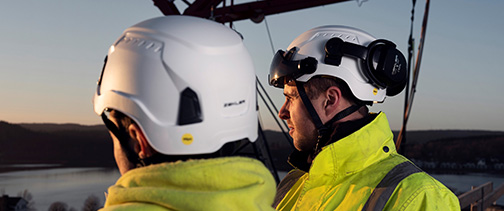-
-
-
-
-
-
-
- Jackets and Vests
- Sweaters
- Shirts
- T-shirt and Pique shirts
- Work trousers
- Shorts and pirate pants
- Hi-Vis Clothing
- Hi-vis rainwear
- Rainwear
- Undergarments
- Underwear and socks
- Skirts and Kilts
- Overalls
- Hats and Caps
- Aprons
- Belts and Braces
- Knee pads and support protection
- Tool Belts and Material Pouches
- Disposable and Chemical Protection
- Protective Clothing, aluminised
- Miscellaneous
- Show fewer
- Show more
-
-
-
-
-
-
test
Marketed by Skydda, Northern Europe's leading
concept in personal protective equipment.



Mobile Menu
- Products
-
-
-
-
-
-
-
-
- Jackets and Vests
- Sweaters
- Shirts
- T-shirt and Pique shirts
- Work trousers
- Shorts and pirate pants
- Hi-Vis Clothing
- Hi-vis rainwear
- Rainwear
- Undergarments
- Underwear and socks
- Skirts and Kilts
- Overalls
- Hats and Caps
- Aprons
- Belts and Braces
- Knee pads and support protection
- Tool Belts and Material Pouches
- Disposable and Chemical Protection
- Protective Clothing, aluminised
- Miscellaneous
- Show fewer
- Show more
-
-
-
-
-
-
-
- Brands
- Knowledge center
-
-
- Newsroom
- Hidden
- Outlet
- Hidden
- Product news
- Hidden
- Hidden
- Customer service
- Log in
- Change language to danish
- Home
- Knowledge center
- Head protection
- What is the Mips safety system?

What is the Mips safety system?
The Mips system is designed to provide added safety for helmets in many accidents. For certain impacts, the Mips system can reduce harmful rotational motion that might otherwise be transferred to the user’s head.
How does the Mips system work?
Should you have an accident and hit your head, the Mips system in your helmet is designed to help reduce the rotational motion of certain impacts that may otherwise be transferred to your head.
Rotational motion is a common cause of concussions and more severe brain injury in oblique hits to the head. The Mips system consists of a low friction layer that is mounted inside the helmet. In a crash, the low friction layer is designed to move slightly inside the helmet in order to help redirect forces away from the head. This is intended to help reduce the risk of brain injury.
Straight vs angled impacts
Traditional helmets are designed for straight impacts, but most impacts are angled. The low friction layer is designed to reduce the rotational force of angled impacts.

A safety system that mimics the brain
Unlike traditional helmets, which are mainly designed and tested for straight impacts, the Mips system’s low-friction layer mimics the brain’s own system for protection against rotational motion.
What is rotational motion?
In most instances when you fall while moving and hit your head, you don’t fall in a straight line. Rather, you fall at an angle, similar to how a tennis ball makes contact with the ground after being hit with a racket. When your head hits something at an angle, it exposes your head to rotational motion, which studies have shown can be more dangerous than linear impacts.
The Mips system in your helmet works as an extra layer that moves slightly when impacted and is designed to help reduce the amount of force from the rotational motion away from the head.
Some helmet testing methods today more accurately reflect real life accidents and account for rotational motion, but most helmet testing methods have remained relatively unchanged for decades. However, thanks to recent scientific advancements and brain injury advocacy, more and more helmet testing methods are including testing for rotational motion. Mips believes that testing standards will change and that all tests will include rotational motion testing within 3-4 years.
How to determine if my helmet has the Mips system or not?
Look for the yellow dot on the back of the helmet. On many helmets, you can see an extra layer inside of it. On other helmets, the layer is integrated in the comfort padding and therefore may not be as visible. The product packaging for the helmet should confirm the inclusion of a Mips system.
Our responsibility
- Our responsibility
- Certifications
- Privacy policy
-
We are members of:

Customer service
Skydda International
- Phone: +46(0)321-67 75 20
-
E-mail: support@skydda.com
- Welcome to contact us!
A selection of our brands
- 3M
- Adapt
- Akla
- Albatros
- Ansell
- Arbesko
- Cederroth
- Clean Air
- Clean Space
- Cresto
- Deb
- Dunlop
- ERIS
- Ear
- Euromaski
- Fortes
- Guide
- Heat Armour
- Heckel
- Honeywell
- Iris
- JedX
- Kask
- L.Brador
- MCS
- Moldex
- Peltor
- ProShield
- Reebok
- Scott
- Semperguard
- Speedglas
- Sulman
- Sundström
- Suprabeam
- TORQ
- Texstar
- Tychem
- Tyvek
- Uvex
- Volcom
- Zekler
Skydda Europe in Bergman & Beving koncern.




